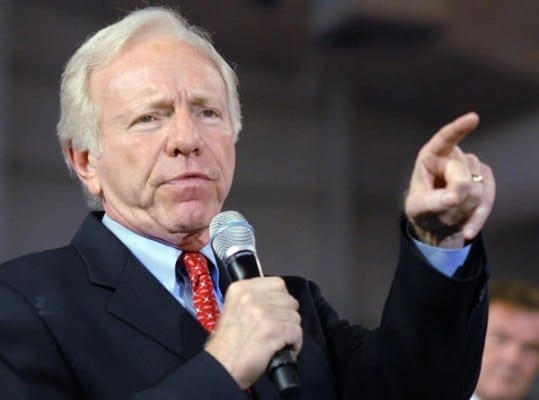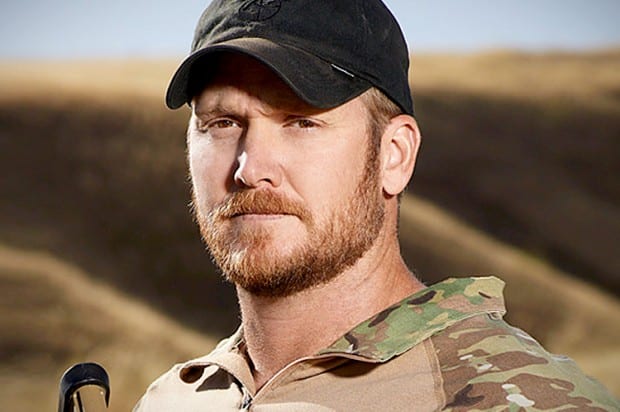Big business declares war on science: The secret story of the Chamber of Commerce’s battle against the environment, global warming action
Driven by a fervor for profit and an anti-government frenzy, the Chamber is a fighting force for the 1 percent
(Credit: bikeriderlondon via Shutterstock/Salon)
[dropcap]W[/dropcap]hen the Data Quality Act turned out not to be the magic bullet they’d hoped for—-it only crippled but did not kill the role of disinterested scientific research in formulating policy—-the U.S. Chamber of Commerce and its sponsoring industries had to move up the food chain of federal power. Rather than merely slowing or preventing the enactment of new regulations through the courts, their new strategy moved to block unwanted laws from taking hold in the first place. This approach was well suited to their battle to conquer the forces massing to take on the defining science-versus-business battle of the dawning century: action to rein in global warning. The Chamber’s passion for transparency and truth would soon dwindle as strongly as it had flared during the salt fight.
Alarm bells had burbled for years through the scientific community, but in 1988 they clanged loudly in Washington, when NASA climate scientist James Hansen told a Senate committee that the so-called greenhouse effect was real, man-made, and destined to put life on earth into a state of upheaval.
Thereafter the heat intensified. In 1990 the UN Intergovernmental Panel on Climate Change concluded that global warming existed. By 1995 the 2,500 scientists who made up the panel warned that the burning of fossil fuels—-primarily coal and oil—-had moved the earth into an era of climate instability, one that was likely to provoke environmental, economic, and social upheaval.
As the devastating findings kept coming from a steady stream of scientific papers, the Chamber joined an angry chorus of industry groups that made strenuous efforts to shout them down. The Burson-Marsteller public relations firm coordinated a campaign dedicated to sowing continued doubt over the existence of global warming. As part of that effort, headquartered out of the rival National Association of Manufacturers, the Chamber lobbied members of Congress against bills, amendments, and U.S. ratification of the Kyoto Protocol, which would have signed the United States up for a rollback to 1990 levels of carbon emissions.
And for a few years, with the fossil-fuel-industry-friendly Bush administration in the White House and Republicans leading the House of Representatives, the regulations crew at the Chamber could move on to other urgent priorities, like pouring salt into the American diet.
Then in 2007 Democrats took over the House, and the political sands shifted again. As soon as the new majority took the gavel, a core of leading Chamber members broke ranks to urge federal action to reduce U.S. greenhouse gas emissions.
The companies that formed the United States Climate Action Partnership were motivated, mostly, by their usual spur: profit. Their executives could see oh so clearly that Congress was poised to rein in greenhouse gas emissions. If a cap-and-trade carbon crackdown could yield a money-making opportunity or competitive advantage—-well, that was something these companies could get behind.
Caterpillar, Duke Energy, General Electric, PG&E, Dow Chemical, Alcoa, DuPont—-the inaugural membership of the Climate Action Partnership had much in common with the list of Chamber board members past and present. The partnership debuted with a promise to deliver a cap-and-trade program “limiting global atmospheric GHG concentrations to a level that minimizes large-scale adverse climate change impacts to human populations and the natural environment.” The pledge, realistically, entailed serious and in some cases costly changes to how U.S. companies did business, not least partnership members. The equipment manufacturer Caterpillar, for one, could suffer mightily if coal mining scaled back. BP stood to suffer cost burdens on its U.S. operations not borne by competitors that refined their oil elsewhere. The arrival of this corporate climate action brigade would appear to put the Chamber in a treacherous position astride a divided business community, much as it had been in the fight over the Clinton health care bill more than a decade earlier. But the reality was that what most of its members wanted really didn’t matter anymore, if a large contributor or two had different priorities. The Chamber still nominally ran major policy positions through committees of members and then the membership itself, and Chamber leadership insisted that its members went through “internal debate” on its climate agenda. But climate activists on the board would later charge that the specifics of hard-line attacks on cap-and-trade never went to a board review.
In 2008, the year battle in the climate war broke out on the Senate floor, the Chamber received one-third of its $140 million in contributions from just nineteen donors, which each gave $1 million or more. The largest—-like all of them, anonymous—-gave $15.3 million. There’s no way to know if that money came from a member with a dog in the climate fight or, if so, which it was. But the contribution, and a parade of other multimillion-dollar donations that year, was a sure sign of how successfully Donohue had positioned the Chamber as a front group for hire for companies that did not want to publicly be seen as supporting politically unpopular positions.
At that moment, doing nothing on climate change was one of the least popular stands a company could possibly take. Even 60 percent of Republican voters polled said they agreed that immediate action was needed to halt climate change; among Democrats, 90 percent agreed. Across all polled, three in four said that to counter global warming, they would be willing to pay more for energy derived from renewable sources like the sun and wind.
The other thing clear by then was that it was possible, at least theoretically, to take cost-effective action to reduce the concentration of carbon dioxide in the atmosphere. In a report for the Conference Board, a research institute supporting effective business practices globally, the consulting firm McKinsey & Company had found that cost-effective action by the United States could feasibly reduce greenhouse gases in the atmosphere by some four billion tons at a cost of roughly $50 a ton.
With key members of the Chamber and a public majority in favor of firm and sensible regulation, the Chamber, fueled by anonymous donations, sped in the opposite direction. Many signs pointed to the coal industry as the funder behind the Chamber’s efforts. Coal still accounted for more than one-third of all the power generated in the United States. But more to the point, the United States consumed 25 percent of all the power generated by coal in the world, second only to China. And coal, in all its uses, accounts for some 40 percent of emissions of carbon dioxide, which is the most prevalent greenhouse gas and the one driving global warming.
The Chamber’s board of directors included executives from Peabody Energy, Southern Company, Massey Energy, Duke Energy, and CONSOL Energy, all of whose business depended on the mining and burning of coal. Donohue himself had joined the board of rail giant Union Pacific, which counted on coal transportation for one-quarter of its business. Between 2004 and 2011, Union Pacific gave $600,000 to the Chamber’s leadership fund. In total, its statements to investors reveal, it gave the Chamber more than $1 million.
In the months before a climate bill came into play in the Capitol, Donohue made vague statements of principle in support of action, tempered by warnings of lost jobs, a stampede of business overseas, and cripplingly high energy prices back home. As a concept, he said, he supported cap-and-trade as a means of controlling carbon emissions. But the practical reality was that no bill could satisfy one of the Chamber’s key demands: that any solution also involve developing nations. That condition had already derailed American participation in the Kyoto Protocol, under which wealthier nations agreed to abide by carbon caps, but competing developing countries—-including economic behemoth China—-got away without obligations or costs to reduce their emissions.

Joe Lieberman: A prominent chancre on the body politic. Not surprising he’d help author a pseudo-solution—cap-n-trade— to a grave issue.
On December 5, 2007, the carbon cap-and-trade bill written by Senators Joe Lieberman (I-CT) and John Warner (R-VA) vaulted from a congressional committee onto the national stage. By March 2008, the Chamber had teamed up with the National Association of Manufacturers and other pro-fossil-fuel groups to sound the alarms at local “dialogues,” panel discussions and such with local business leaders in states with the most to lose. Up to four million jobs would be lost, they warned. Gas and electricity prices would double or more, with a loss to each household of thousands of dollars every year. Just to make sure the message got across where it counted—-to the constituents of senators who would be voting on Lieberman-Warner—-the Chamber provided breakdowns of the calamitous consequences for every state.
It was true that the costs of Lieberman-Warner would not have been borne evenly—-and the coal-mining, transportation, and coal-burning industries would unquestionably have paid for much of that hit. So would electricity customers in coal-burning states. But environmentalists challenged the math: how could the Chamber, for instance, assume no meaningful increase in use of wind energy, and no solar to speak of at all? Other studies that didn’t impose such constraints found that cap-and-trade would inflict much milder hits on the economy.
The National Association of Manufacturers study that the Chamber retailed also neglected provisions in the bill that were specifically designed to lower the cost of cap-and-trade to businesses, such as the ability to store up carbon credits for future use as their price, under an increasingly strict cap, continued to rise. Even the hyperideological Heritage Foundation, which sent an economist to speak at some of the dialogues, came up with less severe estimates for cap-and-trade’s economic hit, using its own set of skewed assumptions.
Surreally, until March 2008, the Chamber officially had no position on climate change itself, never mind a particular bill; nor could it, since so many of its leading members in industries with the most at stake had taken strong stands in favor of action. Even when Donohue did at last reveal that the Chamber supported some kind of effort to reduce greenhouse gas emissions, he declined to get behind cap-and-trade, a tax, or any other specific strategy.
But the Chamber’s opposition to Lieberman-Warner was clear and undeniable. In the spring of 2008, as the bill’s supporters sought a supermajority of sixty Senate votes to bring it to the floor for a vote, the Chamber sponsored an apocalyptic TV and Internet ad campaign aimed at the senators who would decide. On the screen of one ad, a man bundled in a scarf and coat prepared his morning eggs in a pan held over burning candles, before he joined a pack of commuters jogging down the highway to work. “Climate legislation being considered by Congress could make it too expensive to heat our homes, power our lives and drive our cars,” warned the voice of God in the ad. “Is this really how Americans want to live? Washington politicians should not demand what technology cannot deliver. Urge your senator to vote no on the Lieberman-Warner climate bill.”
The ads were designed to shift public sentiment, but their ultimate aim was to influence the members of the Senate who would have to vote on a climate bill. As the Chamber’s Bruce Josten explained to Roll Call: “You’re always better off if you can get constituents talking” to their elected officials.
The bill fell twelve senators short of the sixty Senate yeas that it needed to go to a vote. It didn’t help that on the eve of the cloture vote, ten Democrats, most of whom voted for the go-ahead, wrote a letter to Barbara Boxer (D-CA), chair of the Senate’s environment committee, and Majority Leader Harry Reid expressing grave concerns about the bill, many of which could have been torn from the Chamber’s own talking points. All were from states that would likely have seen costs to businesses or households rise disproportionately.
Having succeeded in undermining the bill, the Chamber went on to attack the losing side. Claire McCaskill (D-MO) and Sherrod Brown (D-OH), two of the letter’s signers, were among the senators who voted for the bill even though they could expect to face blistering campaigns from the Chamber and local businesses for doing so. In the 2012 election they were, predictably, slimed in ads by the Chamber as big-government monsters, but both survived. Jim Webb (D-VA) and Evan Bayh (D-IN) voted for the bill and retired rather than seek reelection under threat of such attacks. Alone in immunity stood Blanche Lincoln (D-AR), who had already proven herself such a Chamber loyalist—-a member of the “Spirit of Enterprise” club for having voted with the Chamber at least 70 percent of the time—-that in 2010 she had earned a TV ad campaign on her behalf from the Chamber. Unlike most candidates the Chamber supported that year, she lost to her Republican rival.
*
The situation shifted again with the 2008 presidential election. Within months of the election of Barack Obama as president, the new chief executive opted to take strong action on his own, without waiting for Congress. The EPA moved to classify greenhouse gases as pollutants, subjecting them to regulation under the Clean Air Act. The move was a prelude to planned emissions restrictions for fossil-fuel-burning vehicles and could have ultimately reached far deeper into the economy. The Chamber and the fuel extractors and burners could challenge it all they wanted and would try to delay and destroy it in court. And the House and Senate would continue to debate cap-and-trade bills for the next two years, without reaching the necessary sixty votes in the Senate. But the power to make or break members of Congress, arguably the Chamber’s most important weapon, didn’t entirely matter in reckoning with an Obama White House determined to go it alone if it had to.
The Chamber would now have to pull off an illusionist’s trick: it would have to deliver for the fossil-fuel-industry patrons that expected it to block tough action on carbon emissions, while also representing its own broader membership and respecting its internal process of deliberation through member committees. After all, the Chamber’s tax-exempt status, and its ability to raise funds without disclosing their sources, depended on fulfilling the mission “to advance human progress through an economic, political, and social system based on individual freedom, incentive, opportunity and responsibility”—-not to carry out campaigns on behalf of individual, deep-pocketed sponsors. As it was, the Chamber’s political operation was the subject of a complaint to the IRS from Public Citizen, demanding an investigation into its declaration as tax-exempt millions of dollars in campaign-connected spending.
In late April 2009, the Chamber’s environment and energy committee organized a three-hour private pseudodebate between advocates of cap-and-trade (Dow Chemical), a carbon tax (Exxon), and technology incentives (Chamber board member Fred Palmer of Peabody Energy, who once justified his company’s anti-climate-action stance by declaring, on camera, that burning coal and emitting CO2 was “doing God’s work”). Some hundred members were in the room for what Kovacs called “quite a spirited discussion,” of which he later observed: “At the end of the debate, there were no members asking to change our policy.”
But in the days leading up to the meeting, Tom Donohue had received a stinging complaint from the VP of government affairs at member firm Johnson & Johnson, a player in the Climate Action Partnership, informing Donohue that “we would appreciate it if statements made by the Chamber reflected the full range of views, especially those of Chamber members advocating for Congressional action.” Just a few hours after the “debate,” Kovacs snubbed Johnson & Johnson’s request. He went before Congress to rip apart the latest cap-and-trade bill, mostly on the untested premise that renewable energy sources couldn’t develop fast enough to fill the gap left as fossil-fuel burning declined. The ambassador for American business was asking Congress to believe that U.S. companies didn’t have the ability to forge ahead and build a new market or compete globally.
[dropcap]R[/dropcap]epresentative Edward Markey (D-MA), one of the sponsors of the bill, couldn’t help but point out that back in the 1980s the Chamber had also fought his Telecommunications Act, which deregulated the phone industry and thereby made possible the digital communications revolution. Then and now, Markey said, the Chamber’s interest in protecting incumbent corporate powers got in the way of what was best for the nation’s society and economy. Then Markey asked a burning question: the committee had just heard from Chamber board members Alcoa and Duke Energy, speaking in support of cap-and-trade, so what in the world was Kovacs doing speaking in opposition?
Kovacs smiled meekly and made a brief argument against cap-and-trade that sounded more like a threat: that any action on its behalf was bound to become ensnared in crippling lawsuits. His written testimony launched into talking points about the Chamber’s internal policy decisions being based on “core principles” and a “transparent democratic process.” No one was fooled, but the Chamber could maintain the pretense that it favored climate action in principle.
Just two months later the Obama administration’s move to regulate greenhouse gases as pollutants forced the Chamber’s toxic climate change denialism out into the open. In a technical and at first obscure briefing submitted to the EPA, the Chamber called for a public proceeding in which the science of climate change—-which it called “hugely controverted”—-could be openly debated, by participants who would be sworn under oath and could be cross-examined, just as in a court proceeding. In a Hail Mary play, trying to catch a ball thrown by misinformation campaigns promoted by companies and industry groups with mammoth greenhouse gas footprints, the Chamber was openly demanding the trial of science that its instigators had been previously denied when the subject was soot or salt.
There was little doubt what side its leadership was arguing. Eight years earlier Bill Kovacs had told a CNNfn interviewer that while global warming exists, “there’s no link between greenhouse gases and human activity.” But by the time of its summer 2009 petition to the EPA, the Chamber was forced to acknowledge that “climate change is to some extent influenced by anthropogenic GHG emissions.” The question that the Chamber was now pressing the Obama administration to open for public debate was not whether global warming was real, or at least partly caused by humans, but whether these confirmed shifts in the environment posed a threat to life—-the basis on which the EPA moved to take action.
Rather than leave its arguments to the imagination, the Chamber’s petition spelled out supposed evidence that global warming was not an imminent threat to human health. In fact, the Chamber argued in almost comical detail, climate change was poised to be a boon. Crops would grow faster and stronger as temperatures rose, while the number of illnesses and deaths attributed to heat would be outnumbered by illnesses and deaths that didn’t happen in the cold.
While the petition was pending, in a highly unfortunate but not accidental choice of historical reference, Kovacs told the Los Angeles Times that such a hearing would be the “Scopes monkey trial of the 21st century.” “It would be evolution versus creationism,” he insisted. “It would be the science of climate change on trial.”
The Scopes trial, as anyone who has seen the classic movie Inherit the Wind will remember, pitted legendary attorney Clarence Darrow against William Jennings Bryan in a showdown over Darwin versus biblical creationism. Science won. Here Kovacs was suggesting, with no small measure of hubris, that science would reveal the harms of global warming as mere superstition and legend.
Kovacs’s declaration of combat served its intended purpose of attracting media attention to the Chamber’s crusade against the Obama administration’s greenhouse gas action. But once environmentalists started looking at what the Chamber was actually saying in its case to the EPA, they were flummoxed. It wasn’t just calling for a showdown over issues where scientists hadn’t yet reached consensus or where there was a case to be made for the benefits of rising temperatures. The Chamber was literally demanding that settled science be opened for debate, with testimony from industry consultants contending that the oceans were not, in fact, turning more acidic or rising as polar ice melted. Kovac wasn’t proposing a debate—-he was setting up what could have been an embarrassing rout for himself.
[box type=”bio”]Alyssa Katz is television critic for the Nation.[/box]
SOURCE: SALON
[printfriendly]
Remember: All captions and pullquotes are furnished by the editors, NOT the author(s).
What is $5 a month to support one of the greatest publications on the Left?





